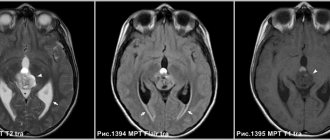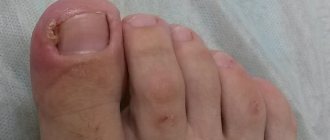Why does a person faint and what is this condition? The brain cannot function normally without a constant flow of blood and nutrients. A sudden disruption of this process causes severe oxygen starvation of brain tissue. The result is a short-term loss of consciousness - usually it lasts a few seconds. The repetition of these cases indicates cardiac and neurological problems in the body, and the causes of fainting are varied. There is no need to delay their diagnosis. Not only fainting, but also pre-fainting conditions should alert you and lead you to a qualified specialist. Now you can undergo a consultation and a set of preparatory examinations when registering for a course of enhanced external counterpulsation or shock wave therapy of the heart absolutely free of charge!
Promotion
Just until the end of autumn, undergo a free consultation and a set of preparatory examinations* when registering for a course of enhanced external counterpulsation or shock wave therapy of the heart.**
Send a request
* Check the details of the Promotion by phone. **Has contraindications; consultation with a doctor is required.
Enhanced external counterpulsation (EECP) Cardiac shock wave therapy (SWTS)
Hurry up to apply, the promotion period is limited.
Symptoms of loss of consciousness
Fainting and loss of consciousness - what's the difference? There is no difference, since fainting is a loss of consciousness for a short time (usually up to 1 minute). The main precursor can be called a pre-fainting state. And speaking about the symptoms of loss of consciousness, most often they mean the symptoms of a pre-fainting state:
- a feeling of lightheadedness and nausea sets in;
- the heart begins to beat quickly;
- circles and “spots” appear before the eyes;
- vision loses clarity;
- a strong pounding appears in the temples;
- cold sweat is produced profusely;
- there is a feeling of imminent fall.
It is at this moment that emergency measures must be taken to prevent loss of consciousness. Timely provision of first aid is also extremely important.
However, fainting can occur quite suddenly, without this “warning”. Its symptoms cannot go unnoticed by others:
- a person suddenly loses his balance and falls in a “sheaf”;
- loss of consciousness occurs;
- the skin becomes pale;
- Limbs may twitch and urine may leak involuntarily.
Having regained consciousness, the person feels overwhelmed and experiences severe drowsiness.
Symptoms of presyncope
There are not many signs of a pre-fainting state; it usually manifests itself in dizziness, sometimes nausea appears (vomiting almost never), the eyes become dark, orientation in space disappears and weakness appears in the muscles, which makes the person want to sit down or lie down. In some cases, there is noise or heat in the ears, and one’s own heartbeat is clearly registered. The blood drains from the face, causing the skin to appear very pale or take on a yellowish or greenish tint if the patient has any chronic diseases. Sometimes, against the background of a pale face, a cyanotic nasolabial triangle appears (with diseases of the heart and respiratory system). Attention! Usually, when a patient notices a faint state, he tends to take a safer position (sit or lie down). After a few minutes, blood flow is restored and the patient feels only residual weakness and, possibly, a headache. If you can’t get into a comfortable position, for example, while standing in a stuffy vehicle or at a meeting under the sun, full-blown fainting may develop. And fainting is dangerous not only because of the reasons that caused it, but also because of the consequences: head injuries when hitting the ground, getting hit by a car when fainting near the roadway, injuries of varying severity (and even lethal) when falling on surrounding objects: steps, sharp fences, corners of building plinths, etc.).
Causes of fainting
There are many reasons why people faint, and almost all of them are associated with a sharp decrease in the intensity of blood flow in the brain. Among the most common causes of loss of consciousness are disorders of the nervous system (50% of all cases) and heart pathologies (25%). Also, immediately before unconsciousness may:
- vascular function is impaired due to a pre-stroke condition, atherosclerosis;
- increased pressure in the vessels of the skull due to hydrocephalus, tumor, hemorrhage;
- the amount of sugar and oxygen in the body decreases, which occurs with kidney pathologies, hypoglycemia, anemia;
- decreased circulating blood volume due to bleeding.
Causes of frequent fainting
The causes of frequent fainting are classified into a separate group. They are usually associated with various mental disorders that manifest themselves periodically, for example, hysterical neurosis. A sudden disruption in blood flow can occur with epilepsy. Often first aid for fainting is necessary for people with low blood pressure and diabetes. A drop in vascular tone can cause fatigue, neurosis, and even a simple transition from a sitting state to a standing state and vice versa.
There are also specific causes in women and men that lead to short-term loss of consciousness.
Symptoms of fainting
- Paleness of the skin;
- Cold clammy sweat;
- Rapid but weak (thread-like) pulse;
- Shallow breathing;
- Inhibition of tendon reflexes;
- Dilated pupils, poorly responsive to light;
- Sometimes – uncontrolled urination or defecation.
The onset of fainting may be sudden or gradual.
In the latter case, fainting is preceded by pre-fainting conditions in the form of severe weakness, dizziness, nausea and vomiting.
First aid for fainting:
- position the patient in such a way as to improve blood supply to the head - raise your legs and try to lower your head a little lower than your body;
- loosen the patient's collar, open the window in the room for air access;
- Sprinkle water on your face, apply ammonia to your nostrils;
- the patient has come to his senses - offer him something sweet;
- If possible, give an intravenous injection of glucose - this will improve blood circulation.
If help for loss of consciousness is provided in a timely manner, the person will feel better within a few minutes.
Types of fainting
In medicine, there are three main types of fainting.
With neurogenic, there is a temporary disorder of cardiovascular reflexes that control the dynamics of blood in the body. This type is varied:
- vasodepressor – consequences of excessively strong emotions, stress, fear, they occur most often;
- orthostatic are caused by a sharp transfer of the body from a lying position to an upright one;
- fainting due to tight collars is explained by too high sensitivity of the carotid sinus;
- loss of consciousness in older men when urinating at night, coughing, defecating - a consequence of a sharp increase in intrathoracic pressure.
If a patient has disturbances in heart rhythm, problems with the conduction of cardiac tissue are observed, and myocardial infarction is diagnosed, then they speak of cardiogenic loss of consciousness.
If, due to sudden fear, panic, or anxiety, a person’s breathing unconsciously quickens and deepens, causing loss of consciousness, such fainting is classified as hyperventilation .
In addition, there are classifications that distinguish:
- maladaptive form - when fainting is caused by adaptation to external conditions (a person overheats, etc.);
- anemic – when the volume of hemoglobin and red blood cells drops sharply, and what remains is not enough to fully supply the brain with oxygen;
- hypoglycemic – when glucose levels in the body drop;
- extreme forms – when the body is exposed to extreme conditions: high mountain air, burns, intoxication with harmful substances, medications.
What should you do after fainting?
If fainting lasts less than 5 minutes and does not have additional symptoms, then there is no need to worry. You just need to rest for your body to recover.
what to do after fainting
But there are indications that require immediate consultation with a doctor:
- If you hit your head when you fall.
- 2 or more fainting episodes per month.
- A pregnant woman or a person with any cardiovascular diagnosis lost consciousness.
Only a doctor will be able to determine whether there is cause for concern and, if necessary, prescribe additional examination.
Diseases that cause fainting
Patients with arrhythmia may experience fainting because the blood supply to the brain is sharply reduced. With bradycardia, symptoms of loss of consciousness are also observed. The reasons are a sharp, almost instantaneous drop in heart rate to 30 or even 20 beats per second when the norm is 65-72.
- In addition, patients may need help with fainting:
- pulmonary hypertension;
- dehydration;
- Parkinson's disease;
- with aortic stenosis;
- diabetes mellitus
Why might fainting happen?
The cause of fainting is a lack of oxygen for optimal functioning of the brain. Reasons for this condition:
- Sudden change in body position. If you sit or lie down for a long time and then quickly get up, your heart may simply not have time to pump blood to your head.
- Blood loss. Due to injury, hemorrhage, internal bleeding.
- Dehydration.
- Intoxication. Moreover, they have completely different etiologies: alcoholic, infectious, food.
- Endocrine dysfunction: thyroid pathology, diabetes mellitus.
- Starvation. Due to lack of nutrients, the production of red blood cells and hemoglobin in it is reduced. As a result, a drop in blood pressure.
- Decreased oxygen supply to the brain.
- Diseases of the cardiovascular system.
Often completely harmless situations lead to fainting, but sometimes there are serious health problems.
Diagnostics
The initial examination consists of listening to the patient’s complaints about the frequency and duration of fainting states, and determining the conditions under which loss of consciousness occurs. A neurological examination is performed.
The patient must be sent for laboratory blood tests.
Among instrumental studies, the most effective are:
- various types of ECG;
- echocardiography;
- computer sphygmomanometry;
- cardiac rhythmography;
- 24-hour blood pressure monitoring;
- duplex scanning of blood vessels.
These are the most modern diagnostic methods that identify the objective cause of fainting and allow you to prescribe optimal treatment.
Treatment of presyncope
First of all, you need to know about primary care methods for the onset of presyncope. If you notice that the person next to you suddenly turns pale and begins to “sag”, loses coordination of movements, the pupils dilate sharply and the gaze does not focus, complains of dizziness and tinnitus (or you feel all these symptoms yourself)
- the victim must be carefully seated or laid down so that he does not fall and is not injured during the fall;
- if it is very hot, stuffy, or sunny outside, you need to take the person to a shady and cool place, or at least fan him or her with a fan or a damp towel;
- give cool water to drink: when drinking, the respiratory function is restored, which entails the restoration of the pulse, so the pre-fainting state will pass faster;
- in some cases, you can smell some pungent odor (standard ammonia);
- Give sweet tea to drink to raise blood sugar levels.
If a pre-fainting state occurs extremely rarely and has objective causes (heat stroke, fatigue, sudden change of position), then it does not require treatment. However, syncope is often a symptom of serious neurological and cardiac diseases, so in order not to miss the onset of the development of pathology, it is better to consult a doctor. The Aximed Neurology Clinic suggests visiting a consultation with a neurologist who, based on your complaints and medical history, will prescribe the necessary tests and, based on the results, propose the most effective treatment strategy.
Prevention
Knowing what to do if you faint, you also need to take preventive measures:
- eat rationally (it is better to consult your doctor about your individual diet);
- Moderate physical activity must be present;
- walk at least 2 hours a day;
- Women during pregnancy should regularly visit a gynecologist;
- eliminate extreme loads and overheating;
- Among medications, the doctor may prescribe nootropics, venotonics, adaptogens, and vitamins.
Diagnostics and treatment at the Center for Pathology of the Circulatory Organs
At the CBCP clinic you have modern European diagnostic equipment, advanced research methods and highly qualified doctors at your service.
Even if you have experienced a fainting state once, this is already a reason to see a doctor. And repeated fainting is a mandatory reason to visit a cardiologist and conduct professional diagnostics. Timely detection of cardiac pathology is far from a death sentence. The CBCP cardiology clinic will select an individual treatment program, and your body will return to tone.
What to do
If a pre-fainting state occurs one-time for objective reasons (stuffiness, heatstroke), it does not require medical intervention. It is enough to sit or lay the person down, move him to the shade, loosen the belt and collar, and give him a drink of cool water or sweet tea. When breathing is restored, the pulse returns to normal, the face acquires a normal color, and the danger of fainting disappears. In other cases, consultation with a neurologist is required. Based on the collected data, the specialist prescribes an examination and develops a treatment strategy, preventing the development of serious pathologies.









